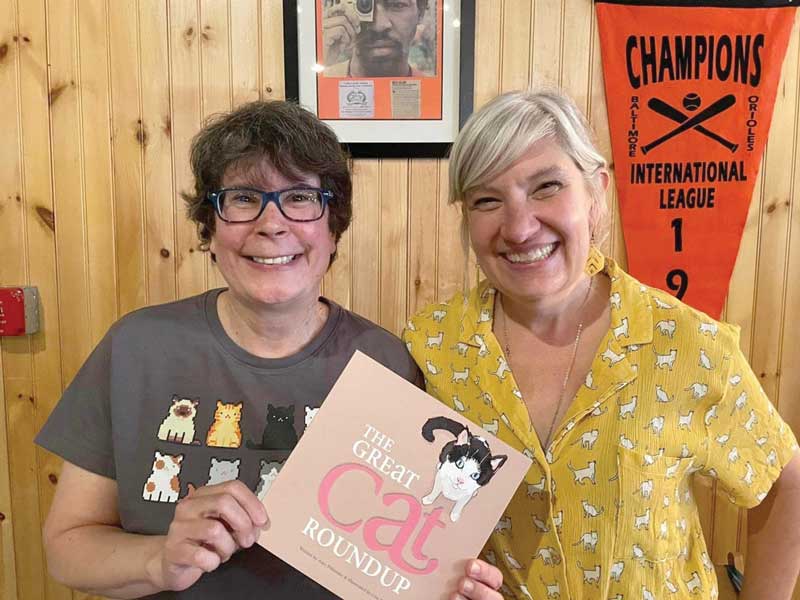When we learned about Amy Pelsinsky and Lisa Pupa’s children’s book “The Great Cat Roundup,” about a Chesapeake island with too many cats, we reached out to the writer and illustrator to hear how this sort of “fairy tale” evolved.

Did you grow up boating?
Amy: I grew up in Maryland and spent every summer crabbing along the Chesapeake Bay with my parents. We’d hang chicken necks from the pier, and my mom and I would pull in the crabs while my dad would scoop them up with the net. We’d take a bushel home to steam up in the backyard.
Lisa: I am not a boater, but I truly enjoy watching boats of all kinds from the shoreline! Whenever I’ve been on a boat, I’ve cherished it as a special event. My visit to Tangier Island awhile back was invaluable for learning about island life—of people and cats.
What inspired your book?
Amy: I’ve been traveling the state and the Bay for a decade in my role as head of communications for the University of Maryland Center for Environmental Science, and I’ve heard a lot of interesting stories. One story was about an island where black cats were raised for the fur trade abroad. One extreme winter in the 1930s, the Bay froze solid, and the cats escaped, running across the ice to land. I heard that if you see a black cat on Tilghman Island, it is likely descended from these refugees. Something about that dash to freedom and a time when the Bay froze solid stuck with me, and one night I woke up in the middle of the night with this story in my head.
“The Great Cat Roundup” is a tale about an island community in the Chesapeake Bay with too many cats. The islanders come up with a scheme to take the cats to the mainland, but when the Bay freezes over, the cats come running back. It’s really about another time on the Chesapeake Bay, so it feels like a bit of a fairy tale to me.
What island is the book based on, or is it a fictional place?
Amy: The story is not based on a particular island in the Chesapeake Bay, but I was surprised to find out after publishing the book that about 20 years ago there were indeed too many cats on Smith Island. An effort was made to spay and neuter the population so that everyone could live happily together.
How do you know one another? How did your collaboration work?
Amy: Lisa and I met when we worked together at the Baltimore Museum of Art. She had done a wonderful illustration of Henri Matisse’s dog for an educational program, so I asked her if she’d be interested in illustrating the book. She is a graphic designer with a degree in publication design, so I handed the words over to her and she came back with sketches that were delightful. Often they made me laugh out loud because they were so darn cute. She handled the production and printing, and I stepped back in to handle the promotion. It has really been a perfect complement of skill sets and a fun project to bring into the world.
Where do we find your book?
The book is available at amazon.com and barnesandnoble.com, as well as local booksellers, including Bird in Hand Books in Baltimore.
Anything else we should know?
Lisa and I are both based in Baltimore but love being by the water and advocating for Chesapeake Bay health. The book is in fact dedicated to the Chesapeake Bay.